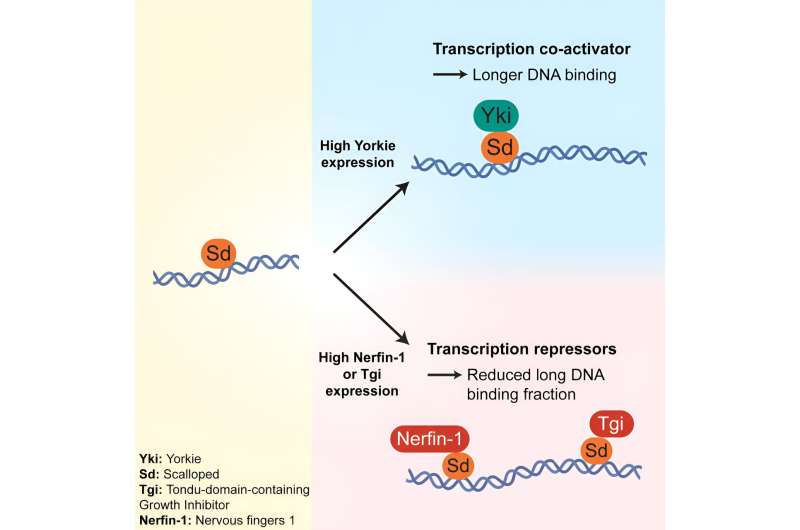This article has been reviewed according to Science X's editorial process and policies. Editors have highlighted the following attributes while ensuring the content's credibility:
fact-checked
peer-reviewed publication
trusted source
proofread
Fruit fly helps unlock clues about how organs, tissue and cancer grow

The fruit fly, Drosophila, has been used by scientists for more than 100 years to unravel key features of life on Earth, such as how animals respond to the sun and how the bodies of animals are patterned from head to tail.
In addition, many major signaling pathways were discovered in fruit flies, including the Hedgehog, Notch and Hippo pathways.
In a new study, published in Developmental Cell, Monash University researchers in collaboration with Peter MacCallum Cancer Center have made new discoveries on how the Hippo signaling pathway sends signals from the cell membrane to the nucleus to change cell behavior.
The Hippo pathway is a group of proteins that work together to control organ size and cell fate, and exists in all multicellular animals on Earth. In addition, when it is mutated in humans it can cause different cancers.
The present study gave new insights into how this pathway changes gene expression and hence cell behavior.
First author Dr. Sam Manning, from the Monash Biomedicine Discovery Institute (BDI), said the results shed light on how signaling pathways control nuclear proteins to change gene expression.
"The Hippo pathway is a very important signaling pathway that controls how big the organs in our body grow," Dr. Manning said. "In this study, we discovered how the Hippo pathway changes how proteins bind to DNA to change cell behavior. This gives us new insights into organ growth, and how cancers form in humans."
Senior author Professor Kieran Harvey, who leads research laboratories at the Monash BDI and Peter Mac, said the research was fundamental and very important. Professor Harvey said the findings could help others with ideas on how to study how other cell signaling pathways work.
"From a fundamental perspective, it is important because it helps understand how signaling pathways work to change cell behavior," he said. "Specifically, it gives new insight into the Hippo pathway, which is important for growth control.
"From a disease perspective, it is important because the Hippo pathway is a key cancer pathway and new knowledge on how it works could one day help treat cancers."
Professor Harvey said while the Hippo pathway did essentially the same job in many different animals, including flies and humans, the results are now being tested by them in human cells.
"This is a fundamental science study," he said. "Treatments and cures and other translatables are often not realized for decades. For example, the Hippo pathway was discovered in Drosophila around 20 years ago, and only recently did the first Hippo targeted therapies enter clinical trials for human cancers. Excitingly, early results show that they have some benefit in patients."
More information: Samuel A. Manning et al, The Drosophila Hippo pathway transcription factor Scalloped and its co-factors alter each other's chromatin binding dynamics and transcription in vivo, Developmental Cell (2024). DOI: 10.1016/j.devcel.2024.04.006
Journal information: Developmental Cell
Provided by Monash University


















